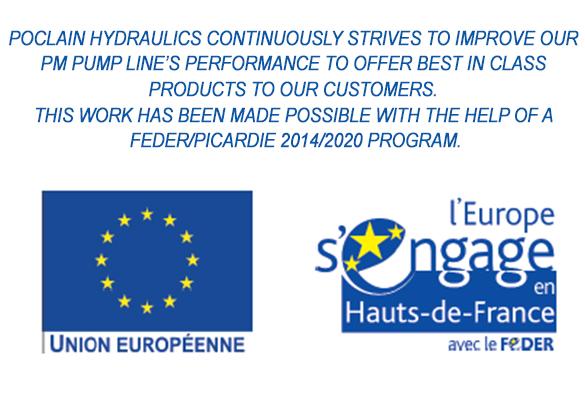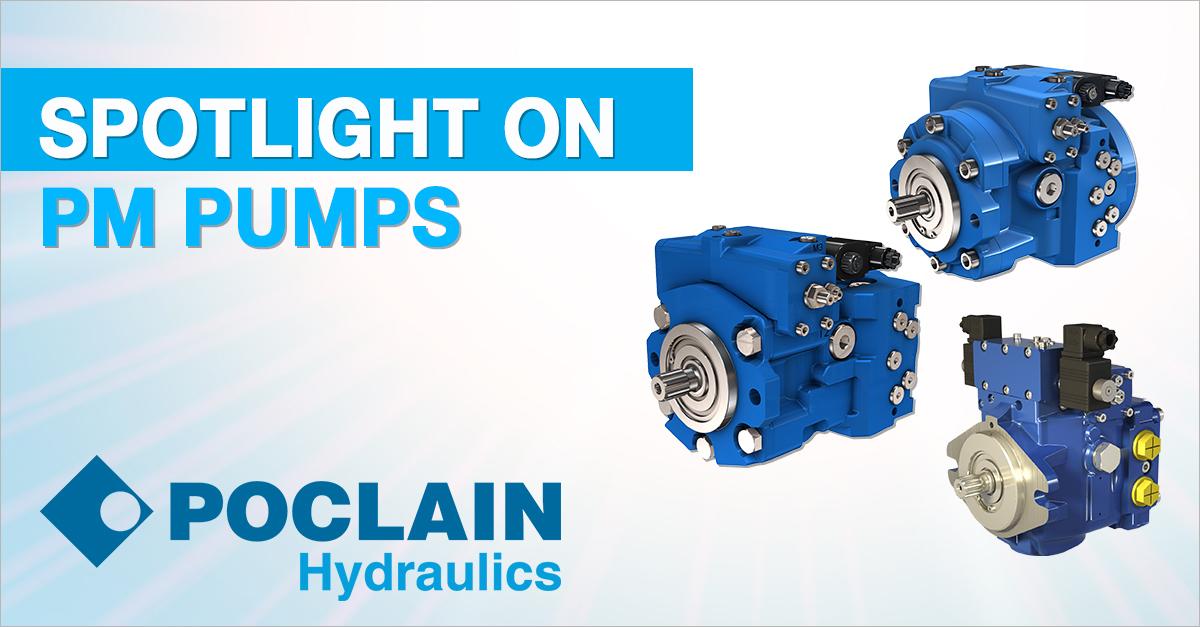OVERVIEW ON POCLAIN HYDRAULICS’ PM PUMP LINE
Flexibility
With the flexibility found in the PM pump line, OEMs can source pumps from the same line of pumps for a variety of machines, simplifying logistics and allowing design freedom. Poclain Hydraulics PM pumps offer flexibility through various product features and sizes.
PM’s modular and interchangeable controls include options for manual servo, hydraulic proportional and electric proportional controls, providing end-users with further customizations.
PM Pumps can withstand a maximum pressure of 5800 PSI (400 bar) and are available in five sizes from 0.43 to 3.97 cu.in/rev. (7 to 65 cm3/rev). The product line offers ten displacement options: 7, 9, 11,14,18, 21, 25, 28, 30, 35, 40, 45, 52 & 65 cc and 6 different frame sizes to help the customer choose the best option for their medium-duty applications ranging from turf care to transportation.
Features such as the charge pump, or flushing valve makes sourcing and system design easier. Integrating all components into one single product saves space and money with less assembly and streamlined sourcing/logistics.
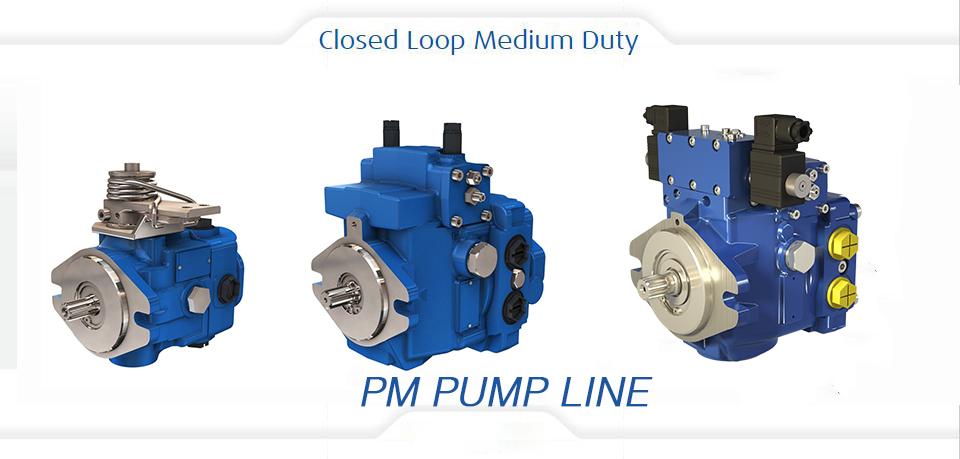
Many control types
Based on the machine’s application, and end-user needs the PM pump range offers different types of controls. Light and simple machines work well with direct mechanical control, available on PM pumps up to 28 cm3/rev. Machines with slightly higher performance levels may require a mechanical control with feedback, available on PM pumps from size PM10 upwards (7 cm3/rev - 0.43 cu.in/rev)
Controls available:
- Direct mechanical control
- Mechanical servo control with feed-back
- Hydraulic servo control
- Hydraulic servo control with feed-back
- Hydraulic Automotive control
- Electrical on-off servo control with return spring
- Electro-proportional control
- Electro-proportional control with feed-back
Flanging capabilities
Besides the wide range of controls, each PM pump features a flange at the rear, rendering a clean machine layout while reducing assembly time and hosing for the OEM for ease of integration into the hydraulic system. The PM pump can be flanged with:
- A flow divider /valve
- An auxiliary pump for supplementary attachments for instance: recycling, lifting equipment, milling tools for a telescopic application a bucket or fan drive actuator for backhoes or excavators
Compact applications such as piggyback forklift trucks with space constraints between the wheels or below the cab can gain invaluable space with this flange configuration.
Gear pumps from 1.6 to 26 cm3/rev» (0.10 to 1.59 cu.in/rev) can be added to the solution, either flanged or completely integrated within the PM housing.
What this means for the OEM and end-customer
To achieve greater system efficiency and streamlined performance, the PM pump line includes a variety of features, such as:
- A Flushing valve helps increase operational efficiency and reduce system complexity; These features ensure system performance and allow the pump to deliver the exact power required for each application. It is integrated in the PM30 & PM50, saving space and reducing total cost of ownership of the machine
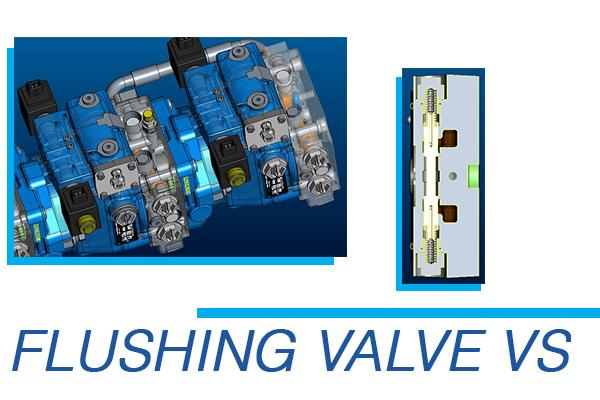
- High pressure relief valves prevent system overload by limiting the maximum pressure in your system, meaning less wear on the system and lower maintenance / service cost. The relief valves maintain circuit pressure in the proper range. The check valves allow charge flow to replenish the low pressure loop of the circuit. The high pressure relief valves ensure a high pressure protection of the high pressure loop of the circuit
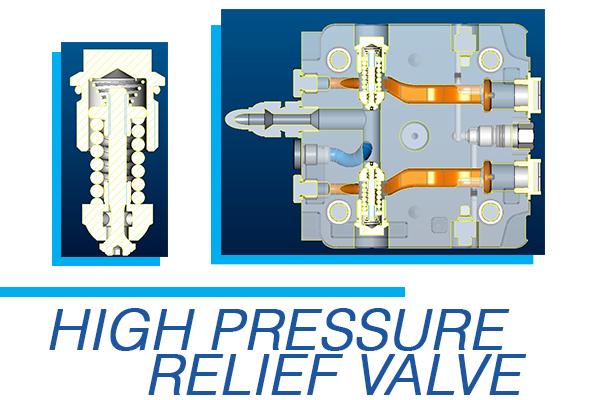
- A Cut-off valve to ensure that the prime mover is not loaded in excess. The function of the valve is to avoid that the pump absorbed power exceeds the machine engine power. The valve acts on the servo control operating pressure in order to reduce the pump displacement and the adsorbed power
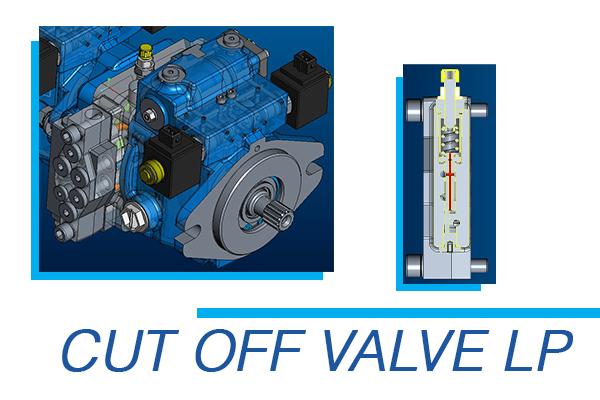
From an end users’ perspective, maintenance is easier. PM pumps combine elements and eliminate the need to manage several components. Also setting, behavior & performance of the machine are easier because all the components are part of the same hydrostatic transmission.
Are you developing a hydrostatic system for your machine?
Whether you need more information on the type of pump to use in your system, Poclain Hydraulics has experts across the globe ready to help you determine what pump makes the most sense for your application.
Stay tuned next month when I focus on the PM10 pump, its machine applications, and how to choose the right options for your machine.
Author: Filippo Ganzerli, Axial Product Marketing Manager
